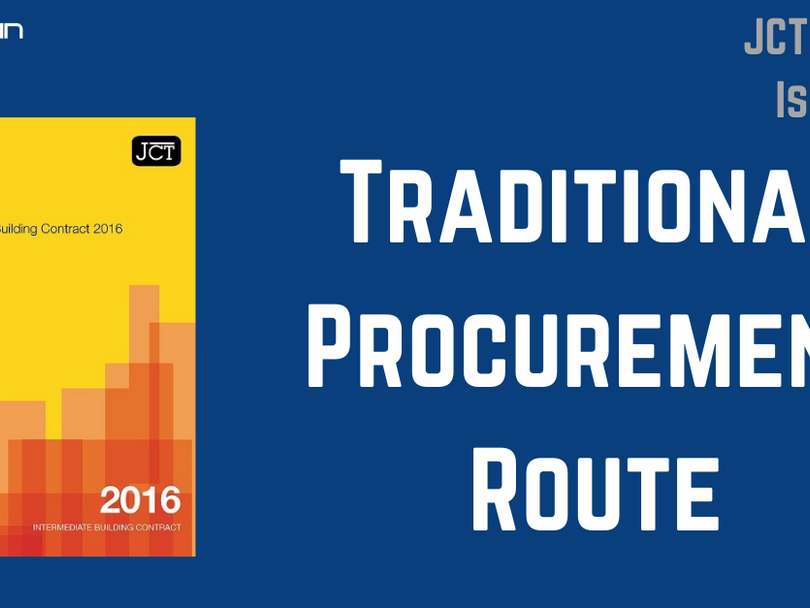There are 3 procurement routes which can be taken under the JCT Contracts; Traditional, design and build and management.
In this article, we shall dive into explaining the traditional procurement route and all the pro’s and con’s that go along with it.

Have you ever wondered why it’s called the “traditional” procurement method?
Well it’s because it’s been used since the Victorian era and it goes a little like this; the client hires a company to design their new housing estate or block of flats, or any construction project really. Then once the design is complete, it will go down one of two routes.
One option would be to hire another firm of cost consultant’s, usually quantity surveyors, to build up a cost estimate and bill of quantities. The cost estimate would provide the client with an approximate cost which could be compared against the tenders, and the bill of quantities will be used to ensure each tenderer provides a quote against using the same build-up of items.
The other route would be to use the design teams cost team or for the client rely on their own judgment and see which quote seemed suitable for the works (we recommend not going down this route as the uncertainty is too great).
Once the design has been completed and the bill of quantities produced, the contract for the construction phase will be put out for tender. This could be single source or competitive tender (we will provide another article going through the tender processes shortly).
The traditional procurement method has a lot of advantages and disadvantages.
The main advantage of the traditional method is the greater certainty. This is because the design is finalised before contractors are appointed, and so there is clarity about precisely what is required and how much it is likely to cost.
To provide this certainty, other aspects do take a hit; the time taken to deliver the project would most likely be increased as the client will have to approach multiple businesses to provide different services. The company constructing the project also has little to no input in the design. This could be an issue as the contractor may spot an issue with the design documents and the client would end up being the middleman between both parties.
As this shows, a traditional procurement method may not be the most ideal procurement route to go down but if a client, or even yourself are asking questions such as;
- Is the design important?
- Do I have a strong sense of how my project should look and feel?
- Am I hoping to collaborate with an architect so that they can capture my vision, to bring what I have been thinking about to life?
- Does being able to feel in control of what’s being designed and built for me matter more to me than getting it finished as soon as possible?
- Am I a person for whom details matter?
Then the traditional procurement method is probably for you.
Metroun, a commercial hub to your business.





